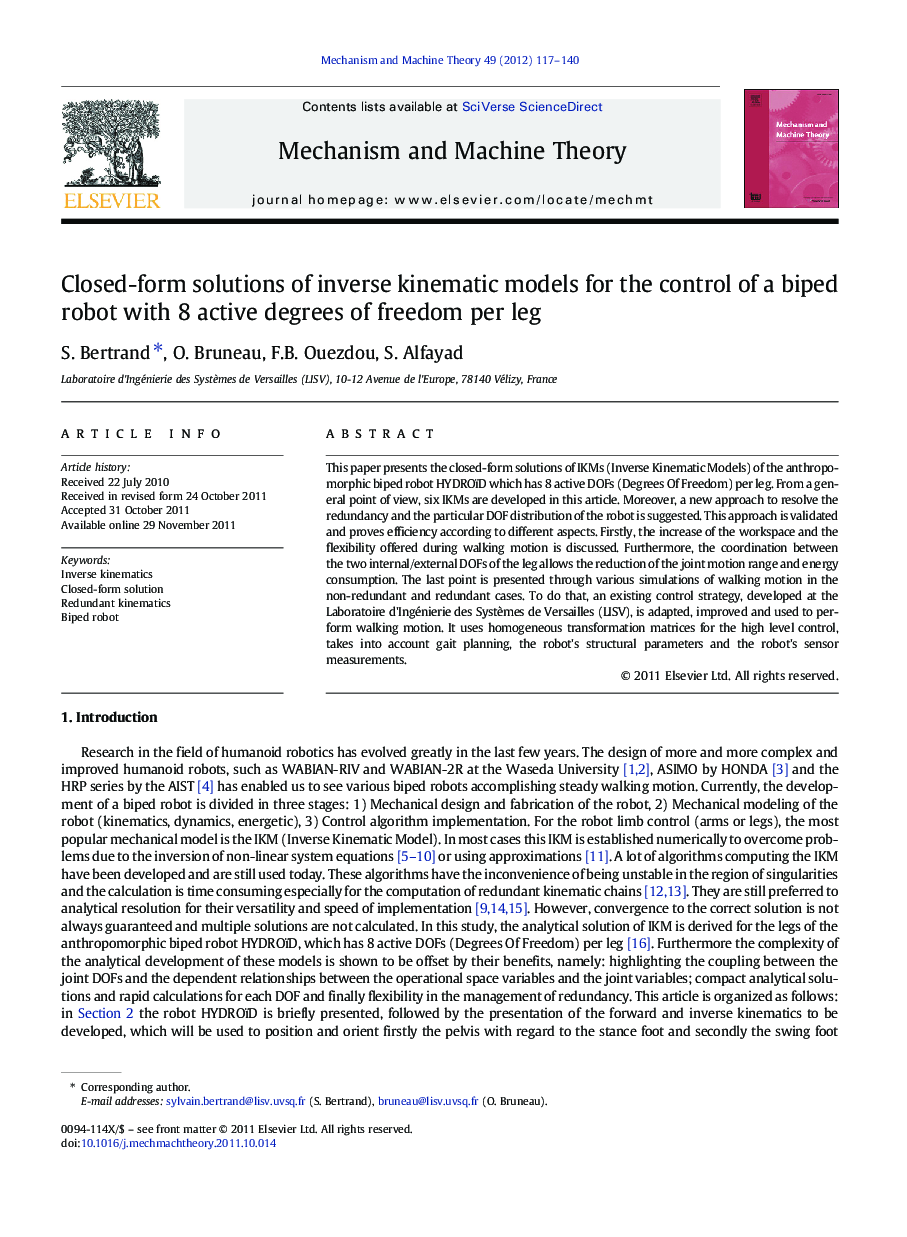| Article ID | Journal | Published Year | Pages | File Type |
|---|---|---|---|---|
| 802410 | Mechanism and Machine Theory | 2012 | 24 Pages |
This paper presents the closed-form solutions of IKMs (Inverse Kinematic Models) of the anthropomorphic biped robot HYDROïD which has 8 active DOFs (Degrees Of Freedom) per leg. From a general point of view, six IKMs are developed in this article. Moreover, a new approach to resolve the redundancy and the particular DOF distribution of the robot is suggested. This approach is validated and proves efficiency according to different aspects. Firstly, the increase of the workspace and the flexibility offered during walking motion is discussed. Furthermore, the coordination between the two internal/external DOFs of the leg allows the reduction of the joint motion range and energy consumption. The last point is presented through various simulations of walking motion in the non-redundant and redundant cases. To do that, an existing control strategy, developed at the Laboratoire d'Ingénierie des Systèmes de Versailles (LISV), is adapted, improved and used to perform walking motion. It uses homogeneous transformation matrices for the high level control, takes into account gait planning, the robot's structural parameters and the robot's sensor measurements.
► IKM (inverse kinematic models) established for the robot HYDROïD with 8-DOF legs. ► Stable walking motion using these IKM and strategy controlling the real mass center. ► The study details how much the redundancy increases the leg's workspace. ► This increasing is then used to reduce the DOF motion range. ► The energy consumption is also studied showing better efficiency in redundant case.
